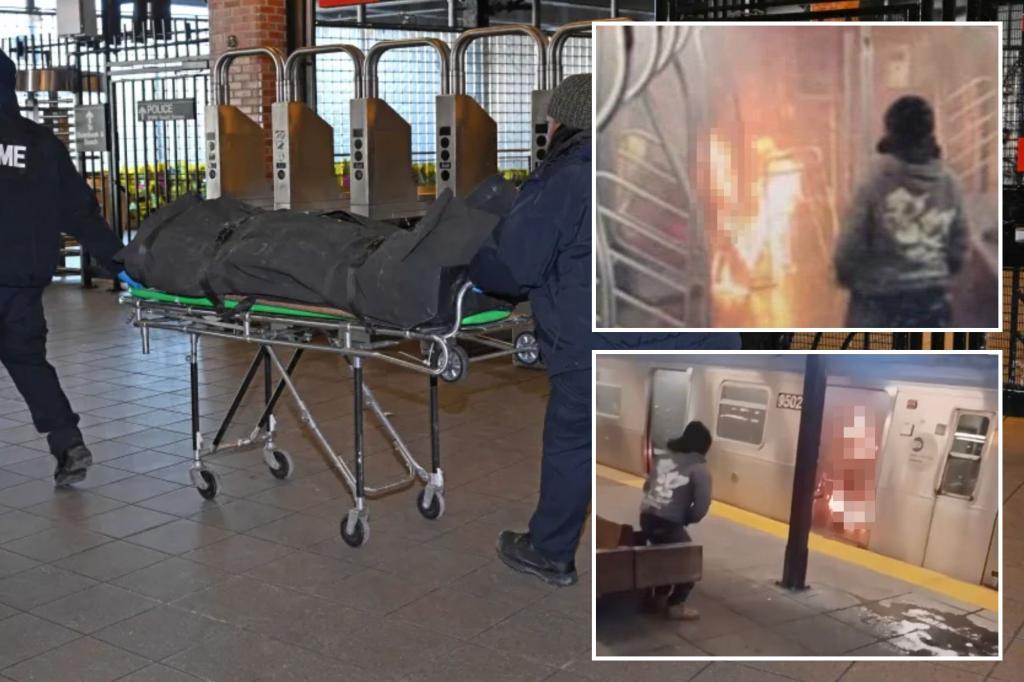The victim of a horrific subway fire in Brooklyn has been identified by law enforcement, though her name is being withheld pending notification of her family. The Coalition for the Homeless has confirmed that the woman was experiencing homelessness. This tragic incident unfolded on the morning of December 22nd, 2023, on a southbound F train at the Stillwell Avenue-Coney Island station. The woman was asleep on the train when she was set ablaze, a horrifying act captured on video that shows the suspect calmly watching her burn. Due to the severity of the burns, identification proved challenging for the medical examiner, who ultimately relied on dental records after fingerprinting attempts were unsuccessful. A source revealed that the victim was alive when she was ignited, with her walker and several bags positioned nearby.
Sebastian Zapeta-Calil, an undocumented immigrant from Guatemala, has been charged with first and second-degree murder, as well as arson, in connection with this brutal crime. He is currently being held without bail at Rikers Island. Federal immigration authorities have disclosed that Zapeta-Calil initially entered the US illegally in 2018, was deported shortly thereafter, but subsequently re-entered the country, eventually making his way to New York City. By March 2023, he had entered the city’s shelter system.
Details about Zapeta-Calil’s life leading up to the incident have begun to emerge, painting a picture of a man struggling with substance abuse. A former shelter resident who knew Zapeta-Calil described him as addicted to K2, a synthetic cannabinoid, and alcohol. This individual, Raymond Robinson, shared a room with the suspect at a Brooklyn shelter and expressed shock at the crime, stating that Zapeta-Calil, though prone to erratic behavior while intoxicated, had never exhibited violent tendencies towards others. Robinson recounted that Zapeta-Calil would often talk to himself when high but had never harmed anyone other than himself. He expressed disbelief, emphasizing the trust he had placed in the suspect, even going so far as to say he would have trusted him with his own daughter – as long as Zapeta-Calil was sober.
Zapeta-Calil’s alleged reliance on K2 provides a disturbing context to the crime. K2, known for its unpredictable and often violent side effects, can induce hallucinations, paranoia, and aggressive behavior. While the full extent of K2’s influence on Zapeta-Calil’s actions remains unclear, his alleged addiction underscores the devastating impact of synthetic drugs and the urgent need for comprehensive substance abuse treatment programs. This tragic incident highlights the complex intersection of homelessness, mental health, substance abuse, and immigration, raising critical questions about the support systems available to vulnerable populations and the potential consequences of untreated addiction.
The horrific nature of this crime has sent shockwaves through the city, prompting renewed calls for improved safety measures on public transit and increased resources for individuals experiencing homelessness and struggling with addiction. The chilling video footage of the incident underscored the vulnerability of those living on the streets and the potential dangers they face. The victim, in this case, represents a larger population grappling with the challenges of homelessness, often forced to seek refuge in public spaces like subway stations. This tragedy serves as a stark reminder of the need for compassionate and effective solutions to address the root causes of homelessness and provide adequate support for those seeking refuge.
The legal proceedings against Zapeta-Calil will undoubtedly unfold in the coming months, with the details of the case and the suspect’s mental state during the incident subject to intense scrutiny. While the justice system navigates the complexities of this case, the city must grapple with the broader societal issues laid bare by this tragedy. The intersection of homelessness, substance abuse, and mental health requires a multifaceted approach that prioritizes prevention, treatment, and support services. This heartbreaking incident serves as a somber call to action, urging a collective effort to address the vulnerabilities of marginalized populations and prevent future tragedies.










